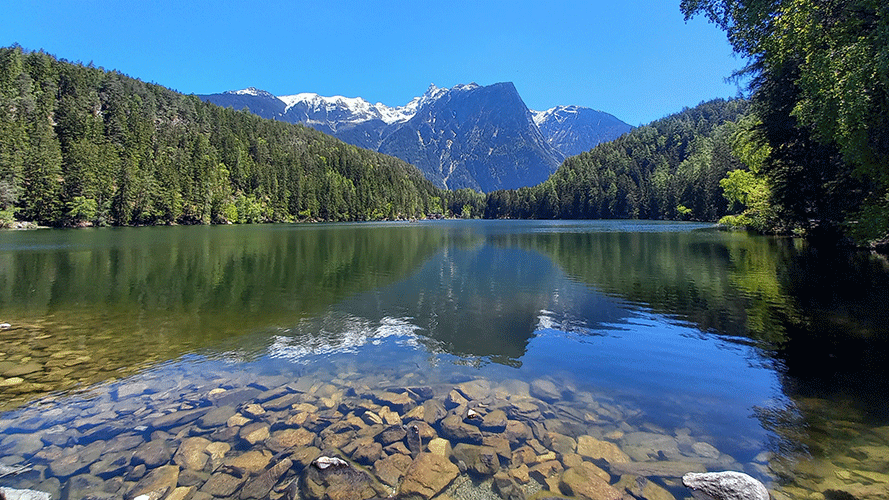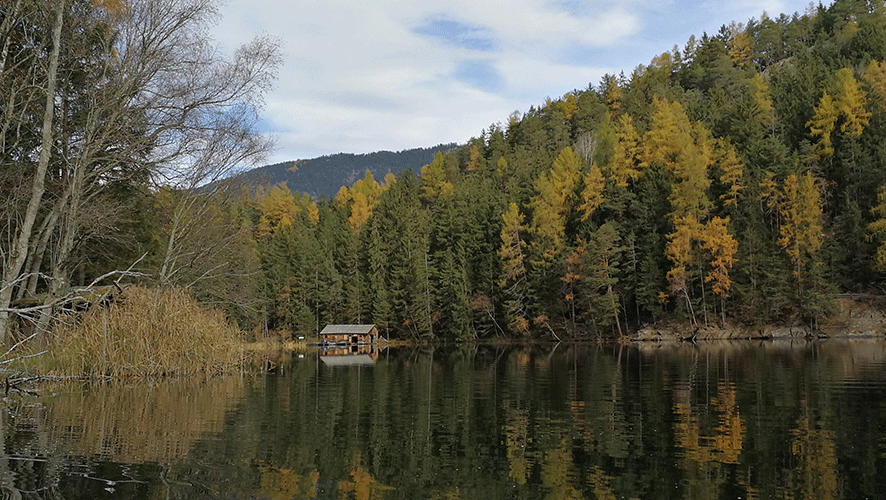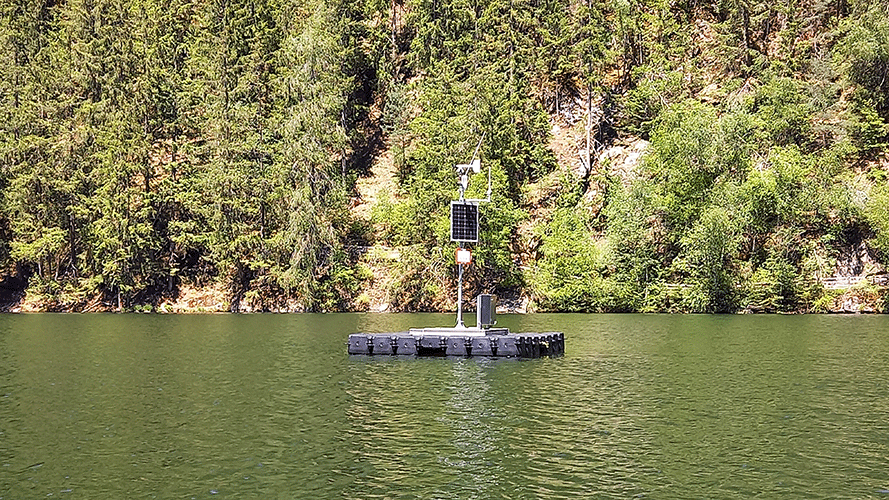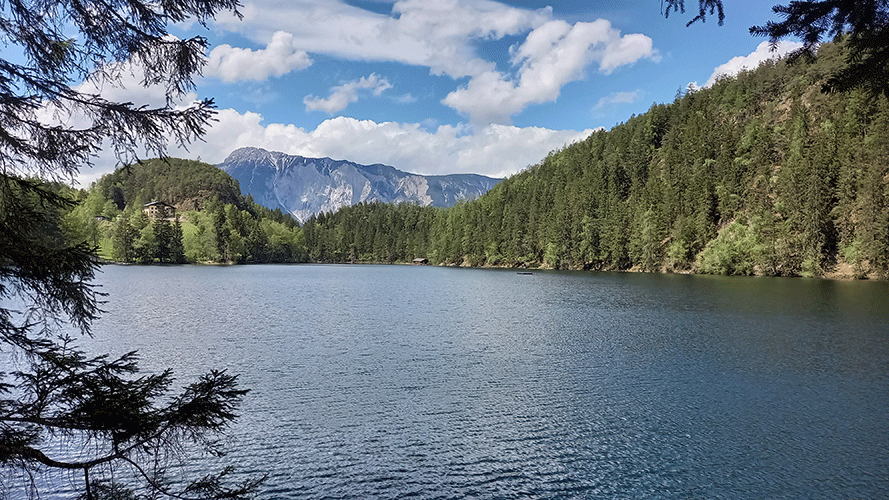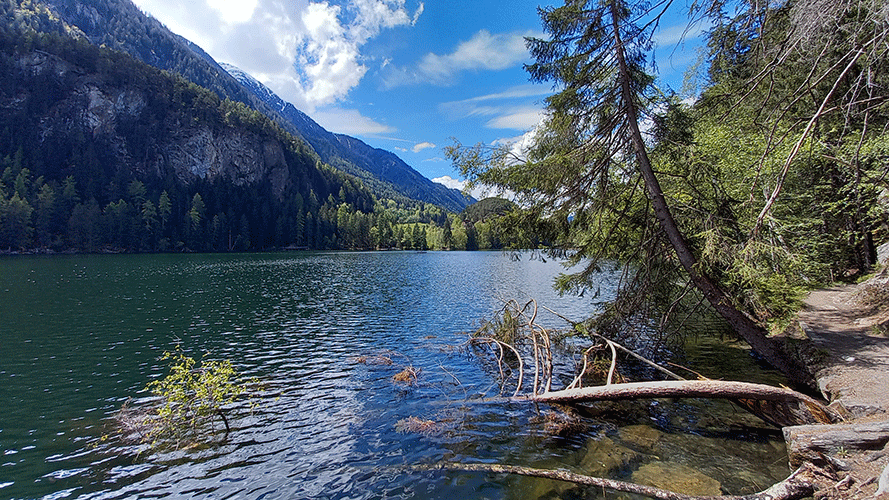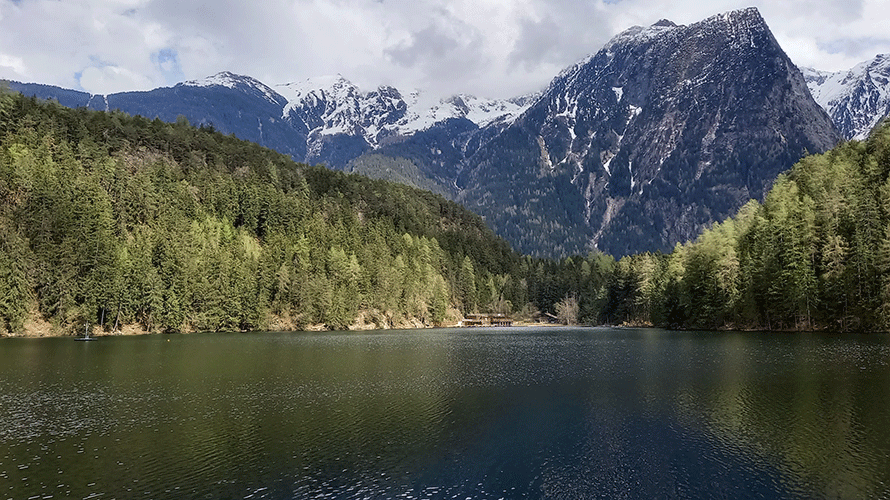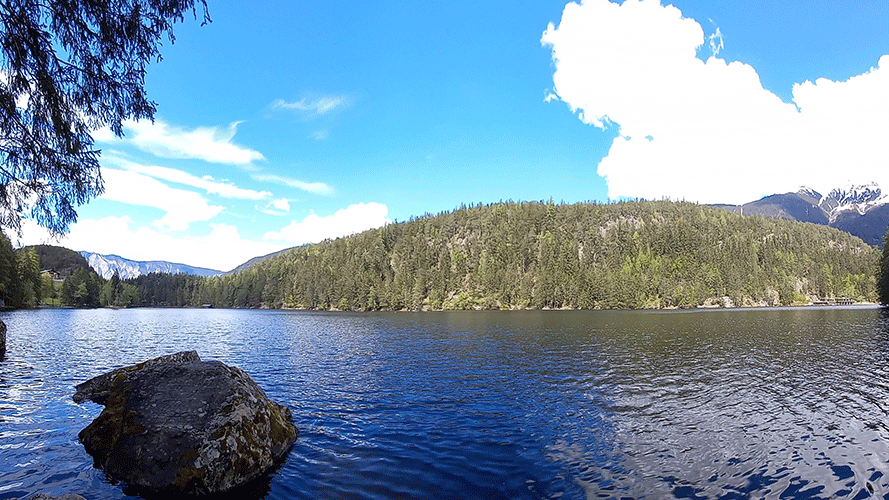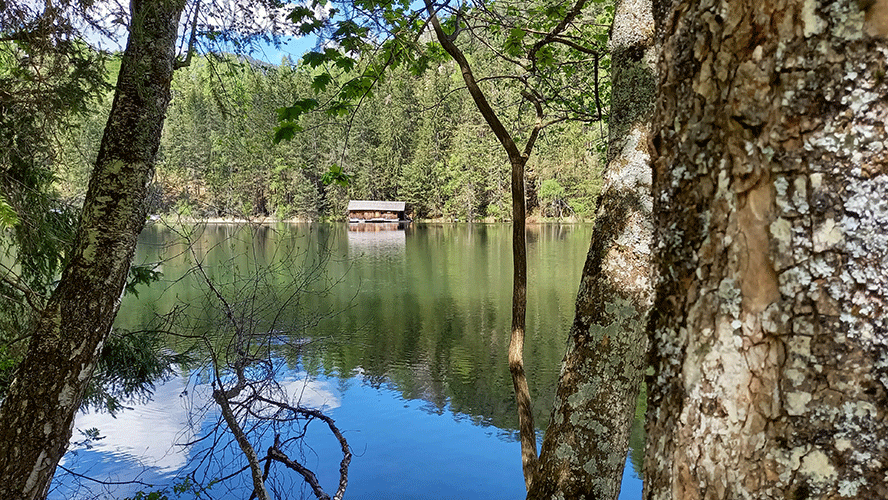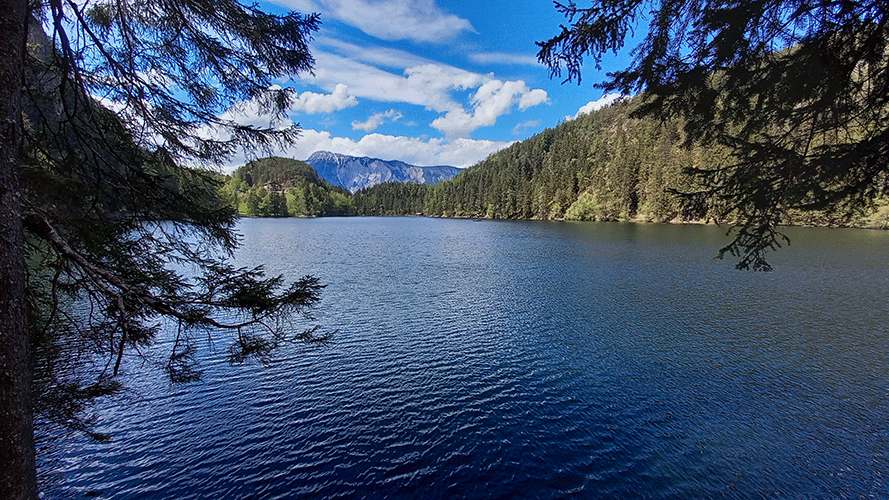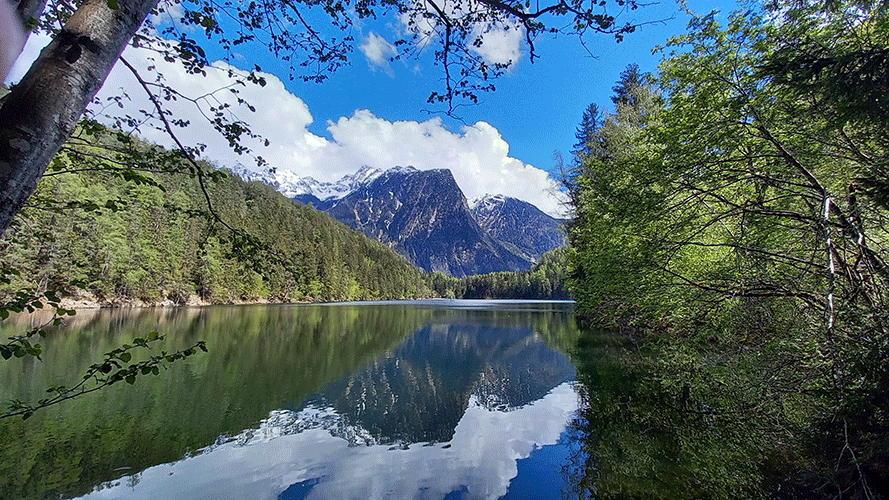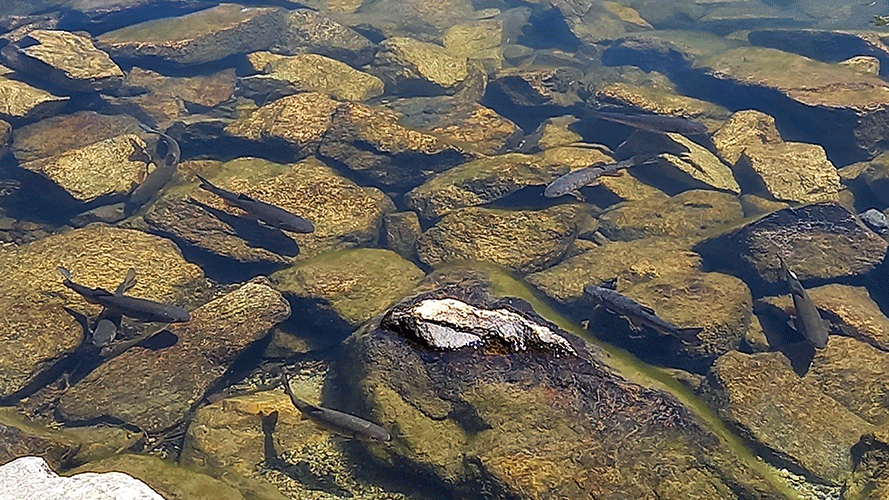Lake Piburg
Lake Piburg is a mountain lake at 913 m of elevation, situated on the western slopes of the Ötz valley above Ötz. The lake is about 14 hectares large and has a maximum depth of 25 meters. Research at this lake started in the 1930s with limnological monitoring performed since the 1960s and 70s. Intensive recreational use and close by agriculture lead to eutrophication of the lake, which was repaired through an Olszewski tube installed in 1970. Today, the lake is oligo-mesotrophic.
The main research infrastructure at the lake is a floating platform equipped with a weather station and sensors measuring water temperature, conductivity, O2 and pH. This platform works all year round with online data transmission.
The data gathered is used for research on bacterioplankton, mixotrophic flagellates and copepods as well as the stratification of the lake and its changes under climate influences.
Lake Piburg is part of the LTSER platform Tyrolean Alps within the international LTER (Long-Term Ecosystem Research) network and a training location for students of the University of Innsbruck.
Links
- LTER site Piburger See
- LTER Austria
- LTSER Tyrolean Alps
- Department of Ecology / Research Unit Alpine Freshwater Ecology
Projects
- LTER Monitoringprogramm (Long Term Ecological Research, Plattform Tyrolean Alps)
- Auftragsforschung Gemeinde Ötz (monatliche Beprobung)
Recent Publications
- Lewis, A. S. L., Lau, M. P., Jane, S. F. et al. (2023): Anoxia begets anoxia: A positive feedback to the deoxygenation of temperate lakes. Global Change Biology, 30, e17046, https://doi.org/10.1111/gcb.17046
- CAZET, J.F. et al. (2023): A chromosome-scale epigenetic map of the Hydra genome reveals conserved regulators of cell state. Genome Research, https://www.genome.org/cgi/doi/10.1101/gr.277040.122
- Spanner, C. et al. (2022): Morphological diversity and molecular phylogeny of five Paramecium bursaria (Alveolata, Ciliophora, Oligohymenophorea) syngens and the identification of their green algal endosymbionts. Sci. Rep. 12: 18089, https://doi.org/10.1038/s41598-022-22284-z
- FRANTAL, D., AGATHA, S., BEISSER, D., et al. (2022): Molecular Data Reveal a Cryptic Diversity in the Genus Urotricha (Alveolata, Ciliophora, Prostomatida), a Key Player in Freshwater Lakes, With Remarks on Morphology, Food Preferences, and Distribution. Front. Microbiol. 12: 787290, https://doi.org/10.3389/fmicb.2021.787290
- TEMPLER, P.H. et al. (2022): Atmospheric Deposition and Precipitation are Important Predictors of Inorganic Nitrogen Export to Streams from Forest and Grassland Watersheds: A Large-Scale Data Synthesis. Biogeochemistry, https://doi.org/10.1007/s10533-022-00951-7
- TEMPLER, P.H. et al. (2022): International Long-Term Ecological Research Network (ILTER) Atmospheric Deposition and Stream Nitrogen Synthesis ver 1. Environmental Data Initiative, https://doi.org/10.6073/pasta/a815f37b4aaa7cf56337e6451a2e2444
- PILLA, R.M., METTE, E., […], SOMMARUGA, R., et al. (2021): Global data set of long-term summertime vertical temperature profiles in 153 lakes. Scientific Data 8, 200, https://doi.org/10.1038/s41597-021-00983-y
- HARRINGER M. & ALFREIDER A. (2021): Primer evaluation and development of a droplet digital PCR protocol targeting amoA genes for the quantification of Comammox in lakes. Scientific Reports 11, Art. No. 2982, https://doi.org/10.1038/s41598-021-82613-6
- JANE S.F., HANSEN G.J.A., KRAEMER B.M., […] SOMMARUGA R., et al. (2021): Widespread deoxygenation of temperate lakes. Nature 594, 66–70, https://rdcu.be/cl4si
- KRAEMER B.M., PILLA R.M., […] SOMMARUGA R., et al. (2021): Climate change drives widespread shifts in lake thermal Habitat. Nature Climate Change 11, 521–529, https://rdcu.be/cl4r3
- OSWALD P., STRASSER M., HAMMERL C. et al. (2021): Seismic control of large prehistoric rockslides in the Eastern Alps. Nat Commun 12, 1059, https://doi.org/10.1038/s41467-021-21327-9
- AGUILAR P. & SOMMARUGA R. (2020): The balance between deterministic and stochastic processes in structuring lake bacterioplankton community over time. Molecular Ecology 29:16, 3117 - 3130, https://doi.org/10.1111/mec.15538
- KOPEJTKA K., TOMASCH J., ZENG Y., SELYANIN V., DACHEV M., PIWOSZ K., TICHÝ M., BÍNA D., GARDIAN Z., BUNK B., BRINKMANN H., GEFFERS R., SOMMARUGA R. & KOBLIZEK M. (2020): Simultaneous presence of bacteriochlorophyll and xanthorhodopsin genes in a freshwater bacterium. mSystems 5/6, No. e01044-20, DOI: 10.1128/mSystems.01044-20
- OSWALD P., HUANG J.-J. S., FABBRI S., AUFLEGER M., DAXER C., STRASSER M. & MOERNAUT J. (2020): Strong earthquakes as main trigger mechanism for large pre-historic rock slope failures in Western Tyrol (Austria, Eastern Alps): constraints from lacustrine paleoseismology. EGU General Assembly 2020, Online, 4–8 May 2020, EGU2020-14611, https://doi.org/10.5194/egusphere-egu2020-14611
- PILLA R.M., WILLIAMSON C.E., […], SOMMARUGA R., STRAILE D., STROCK K.E., et al. (2020): Deeper waters are changing less consistently than surface waters in a global analysis of 102 lakes. Scientific Reports 10, No. 20514,
- SONNTAG B. & SOMMARUGA R. (2020): Effectiveness of Photoprotective Strategies in Three Mixotrophic Planktonic Ciliate Species. Diversity-Basel 12/6, No. 252, https://doi.org/10.3390/d12060252
- WERNER N., ORFANOUDAKI M., HARTMANN A., GANZERA M. & SOMMARUGA R. (2020): Low temporal dynamics of mycosporine‐like amino acids in benthic cyanobacteria from an alpine lake. Freshwater Biology 6:1, 169–176, https://doi.org/10.1111/fwb.13627
For more publications please visit the bibliography.
